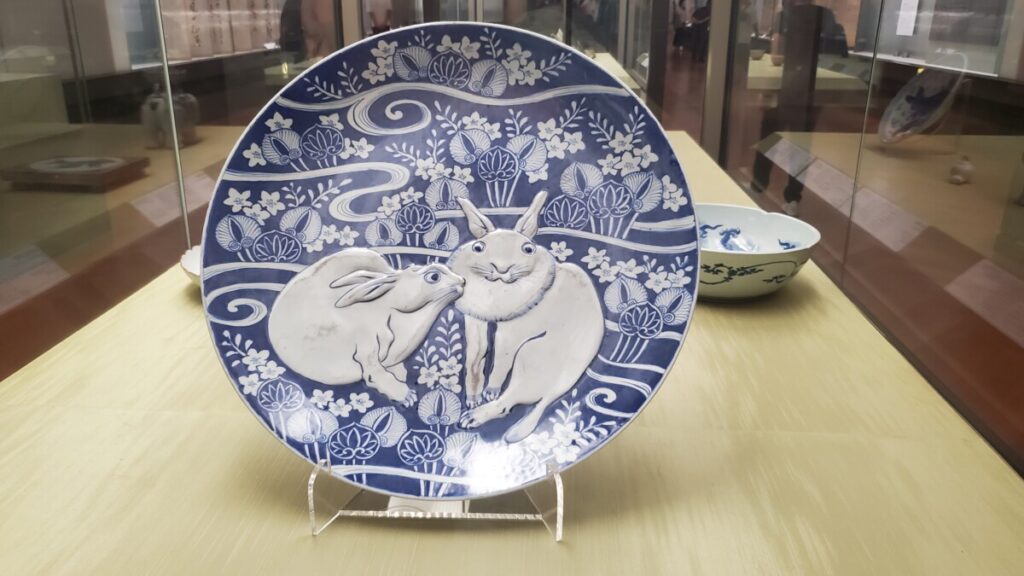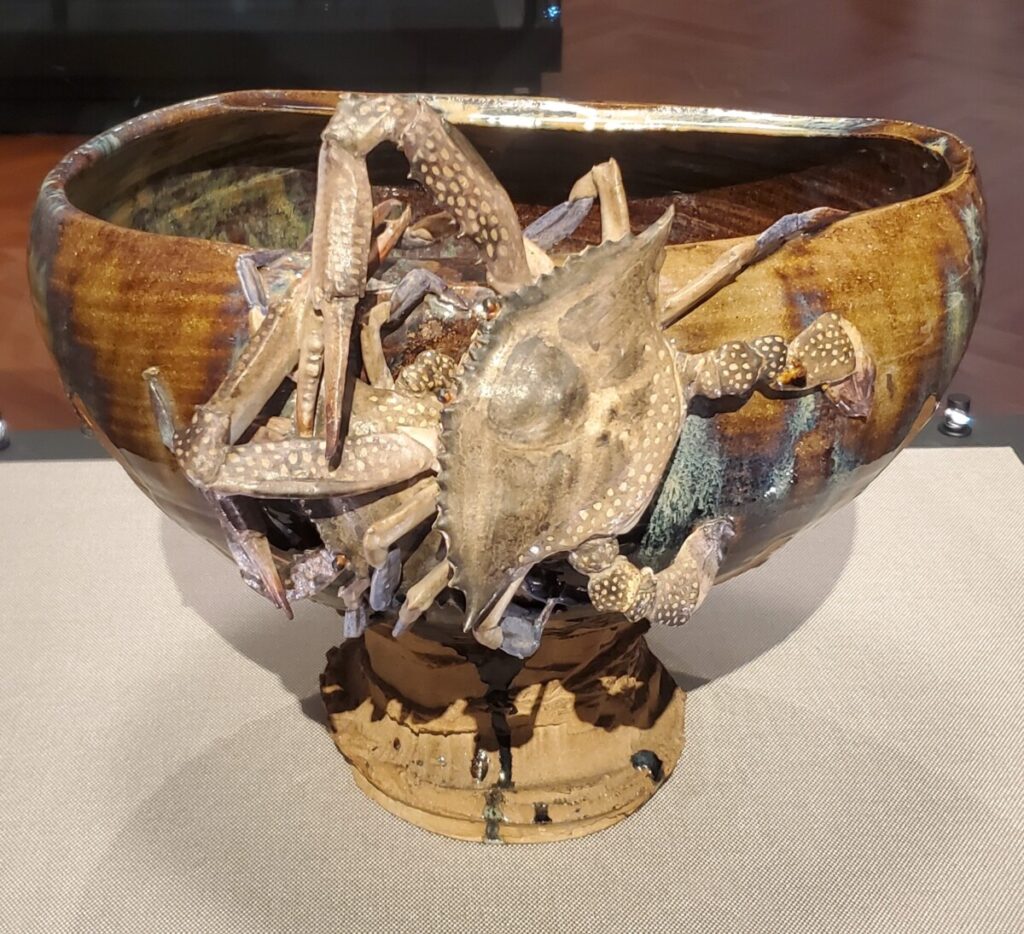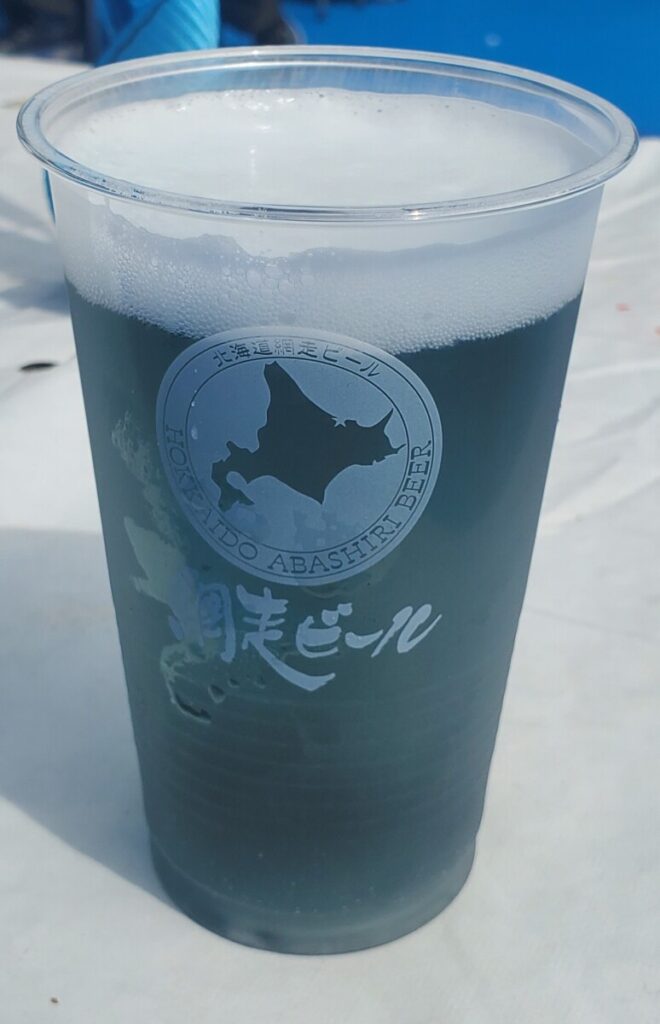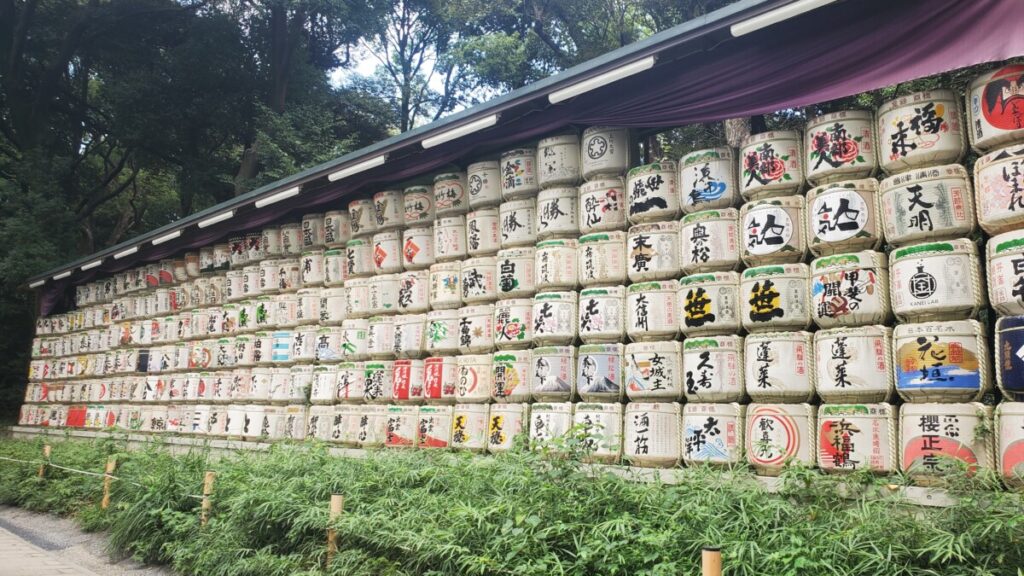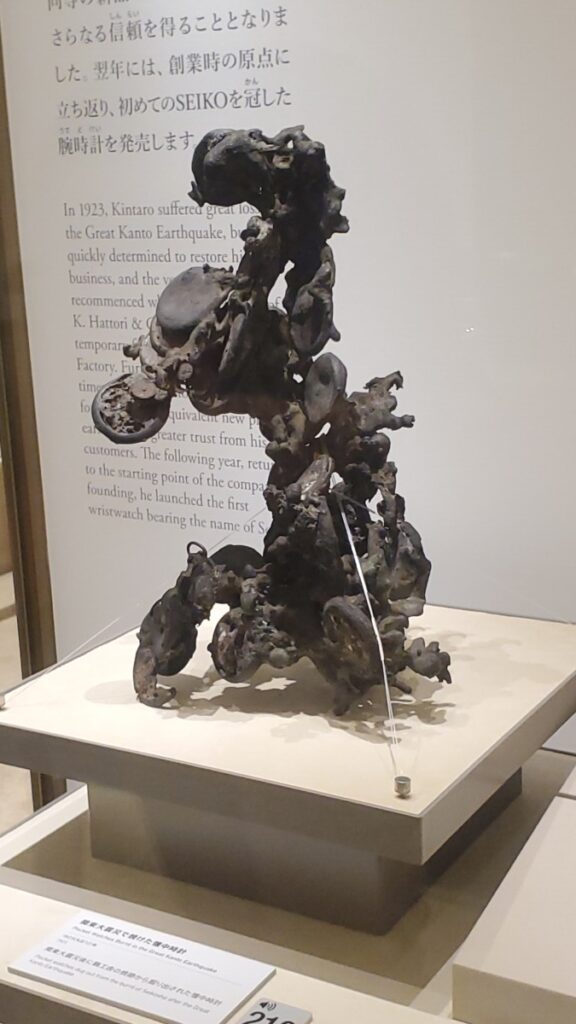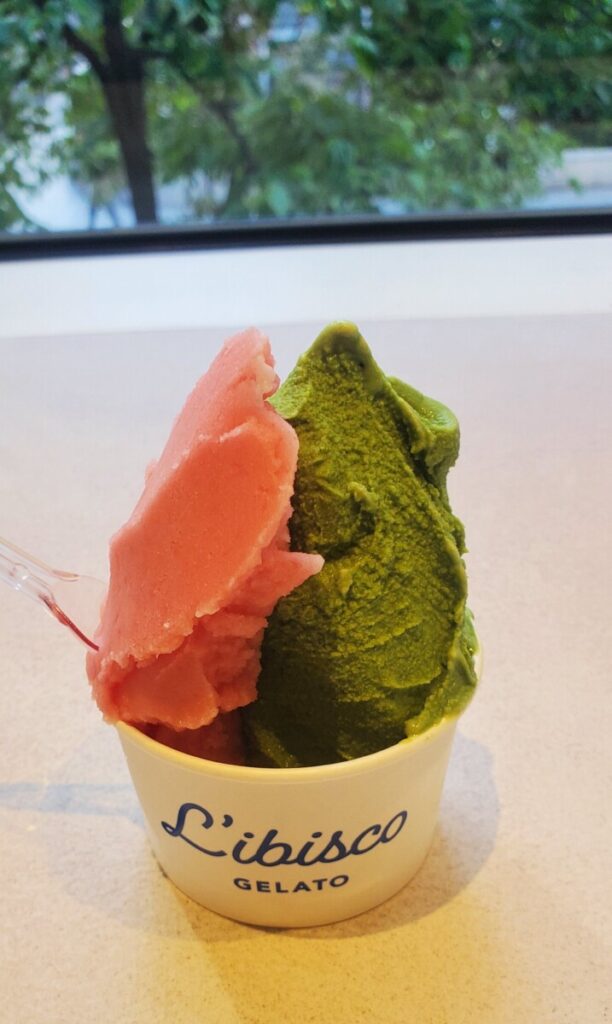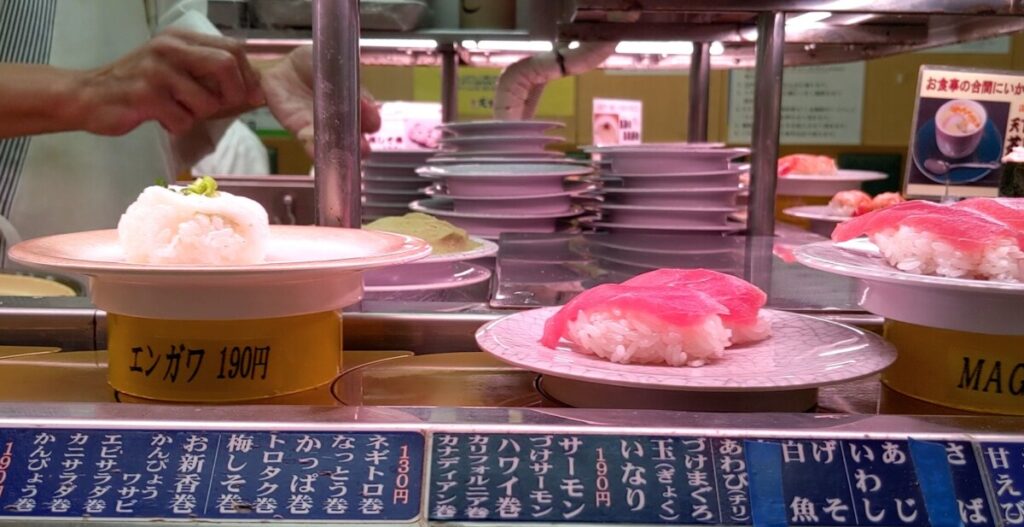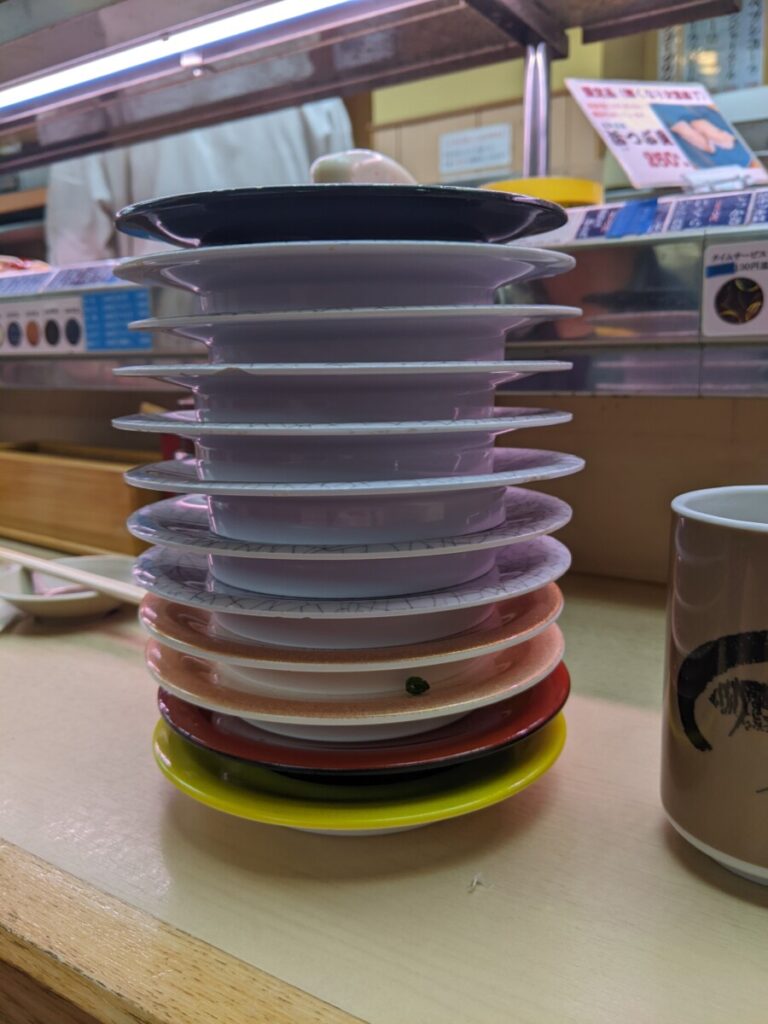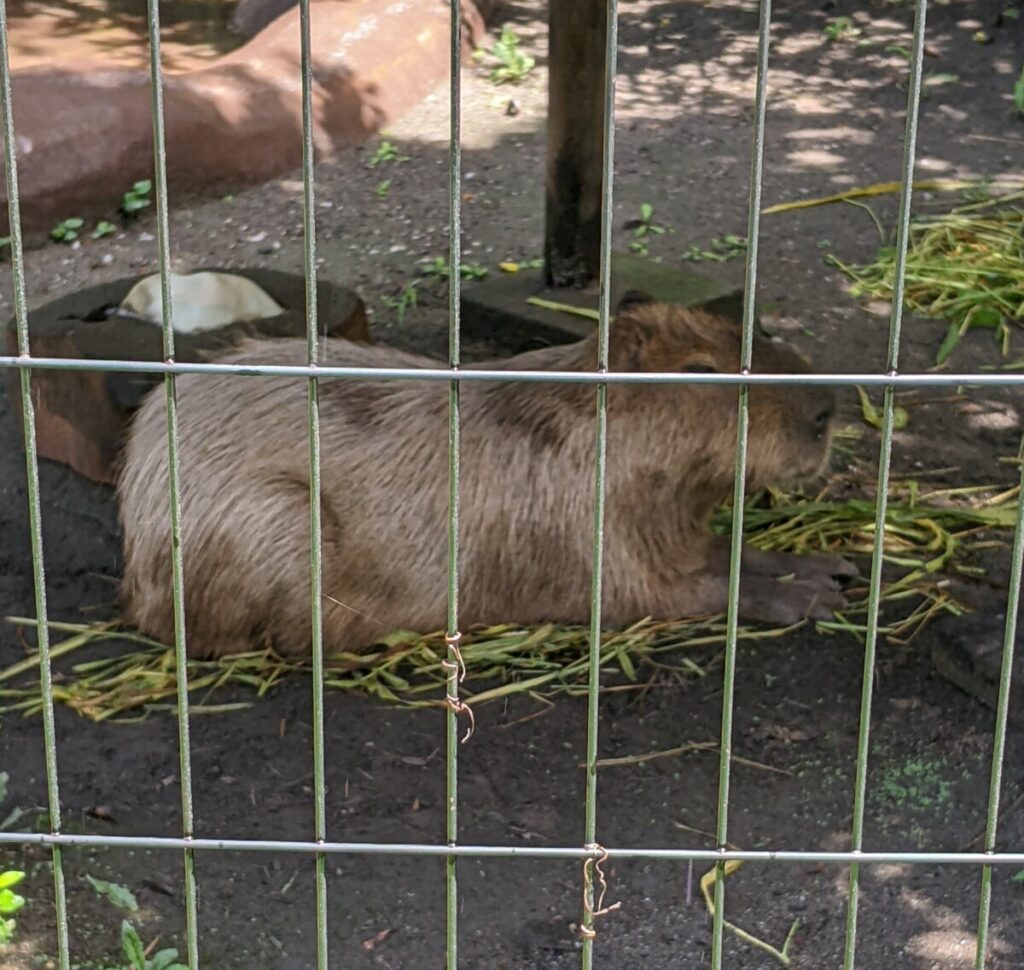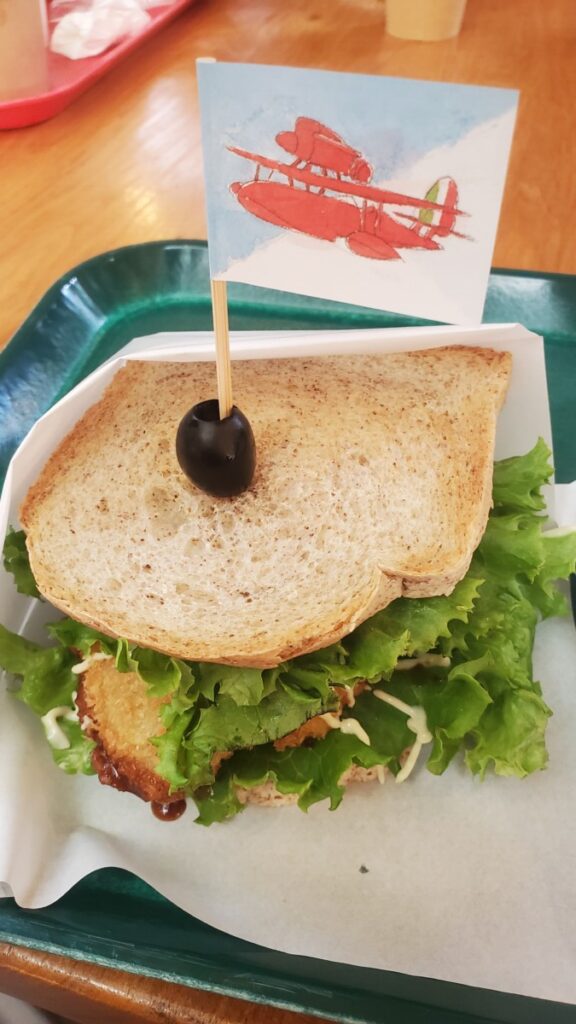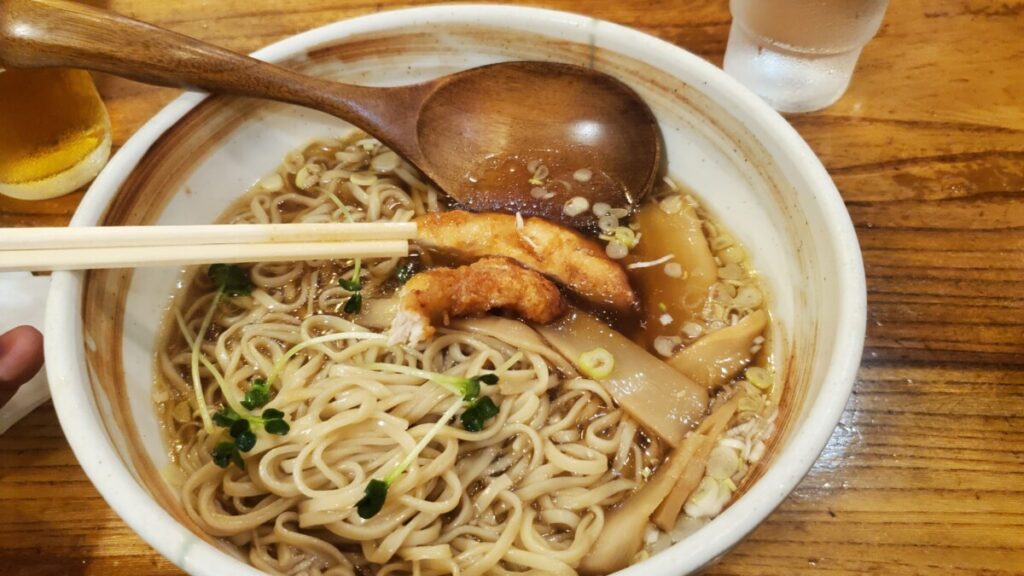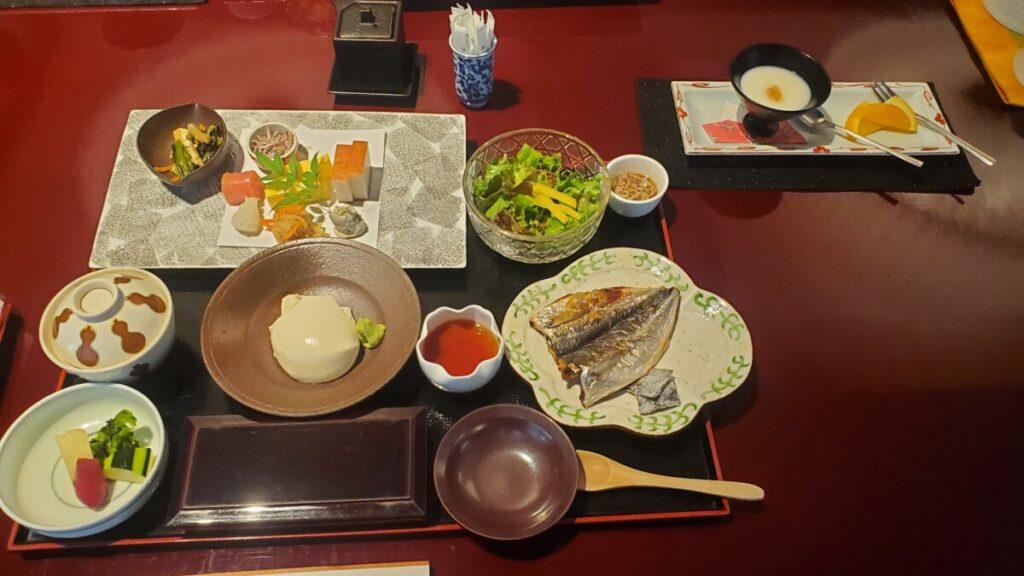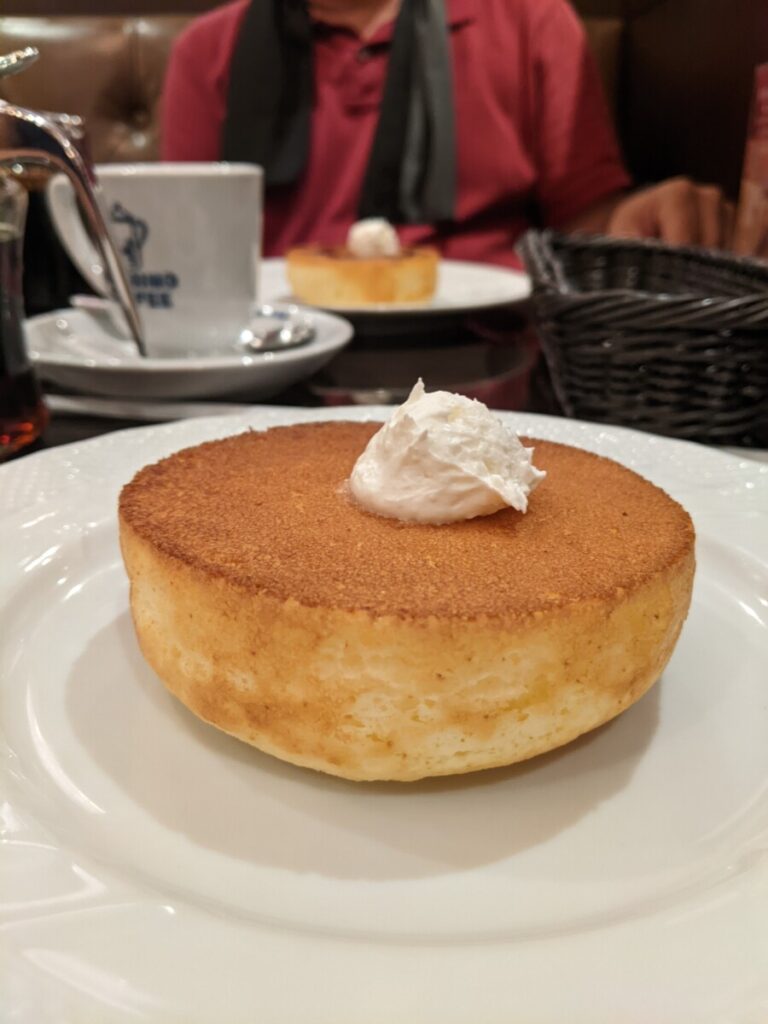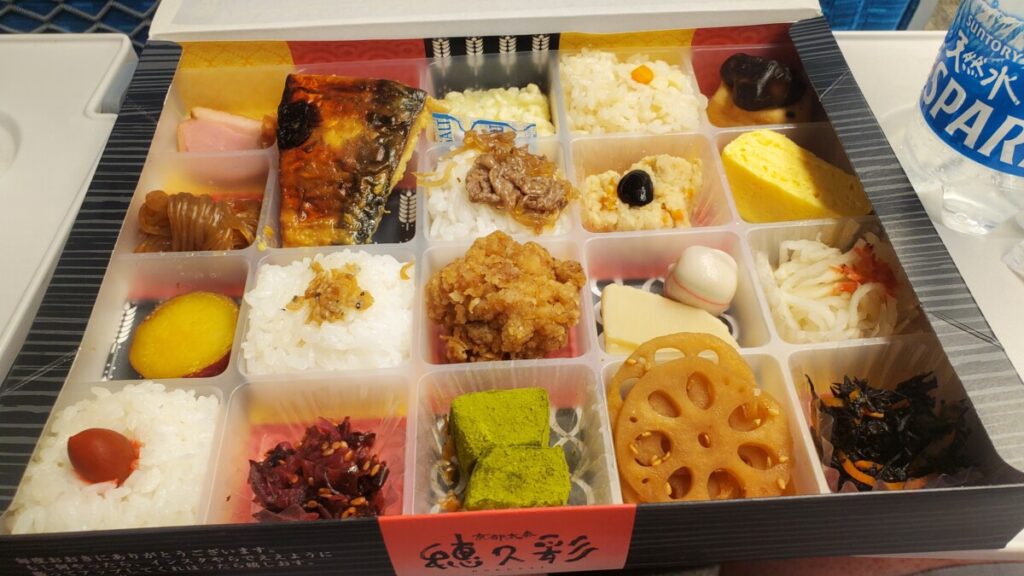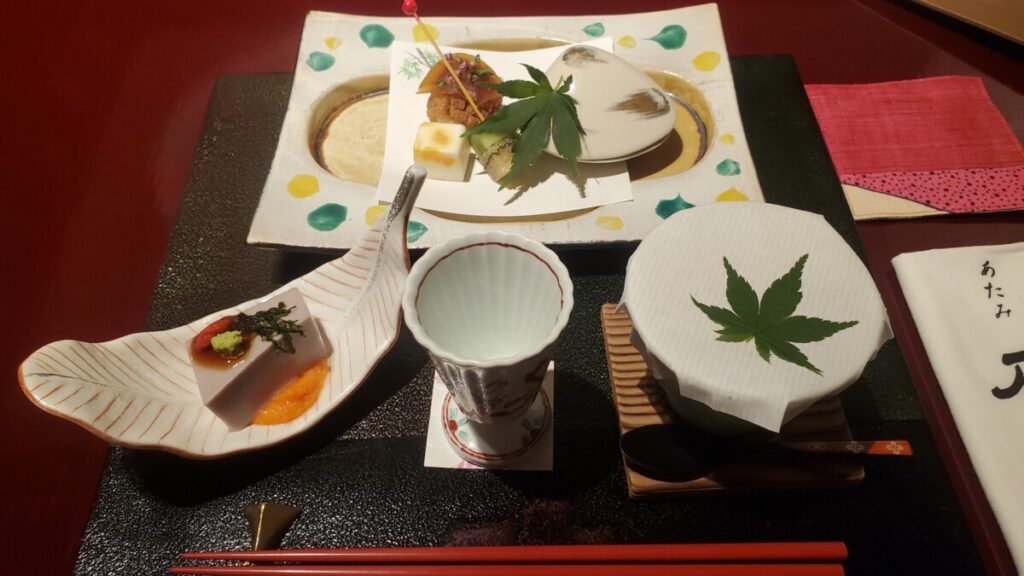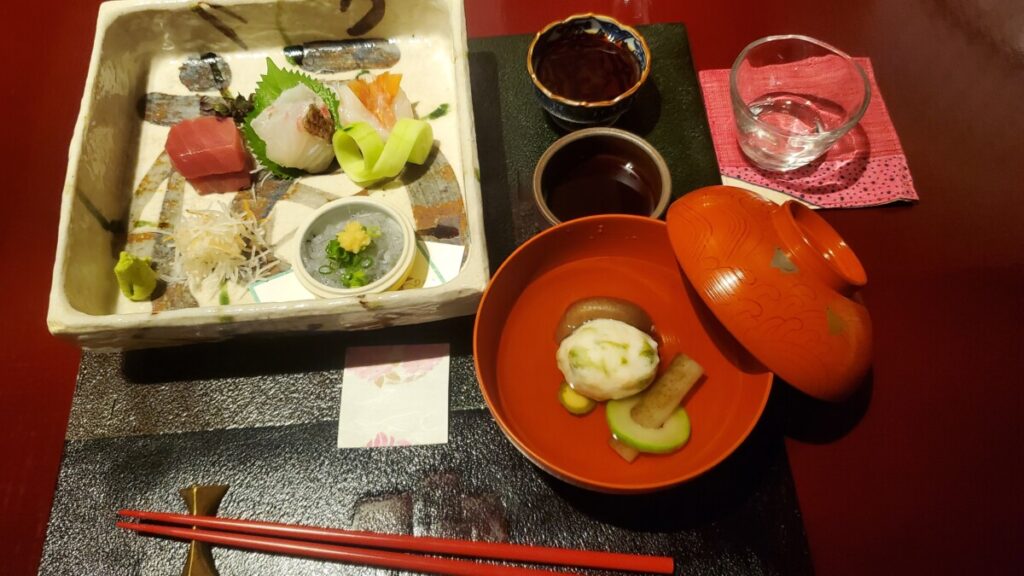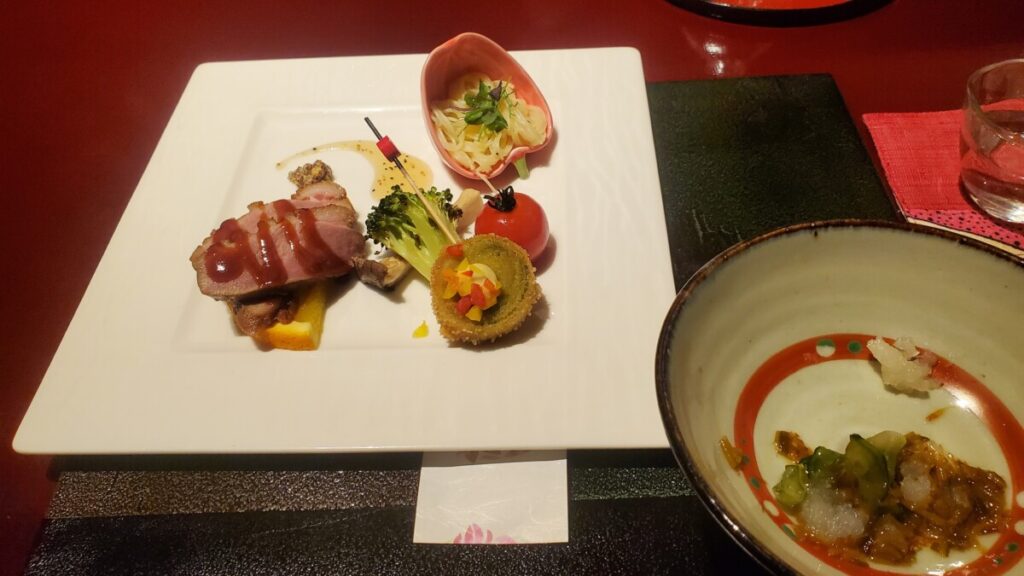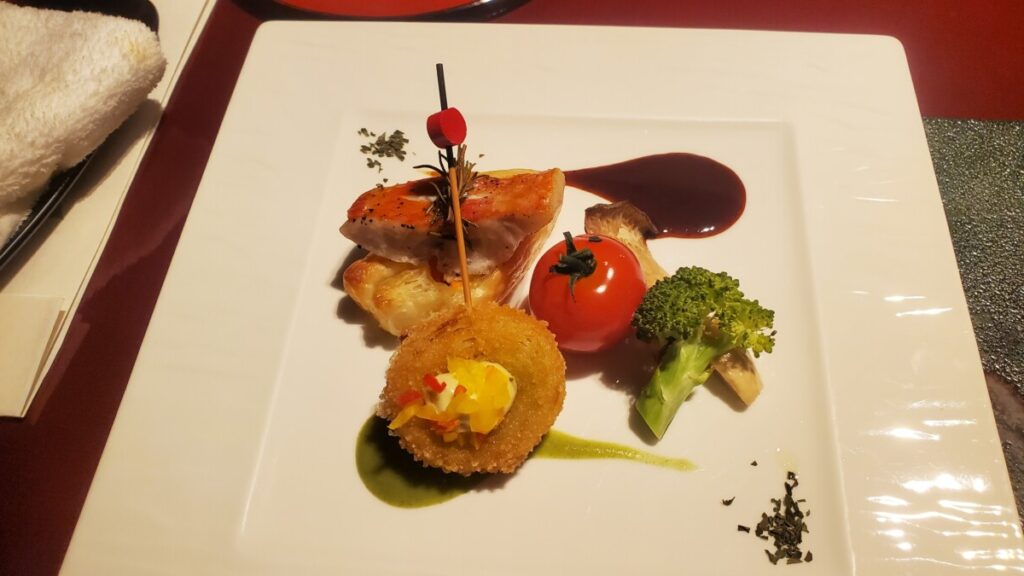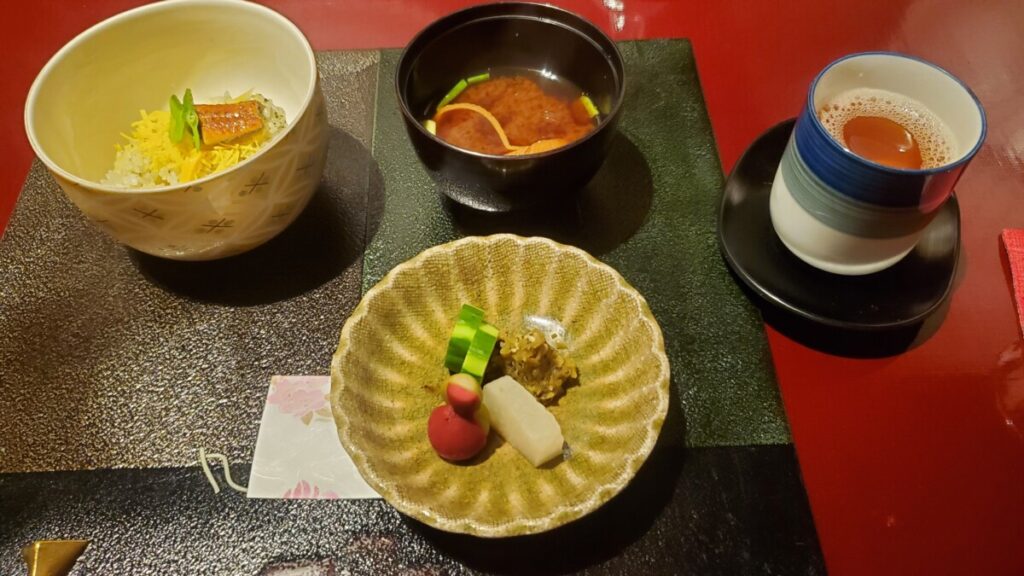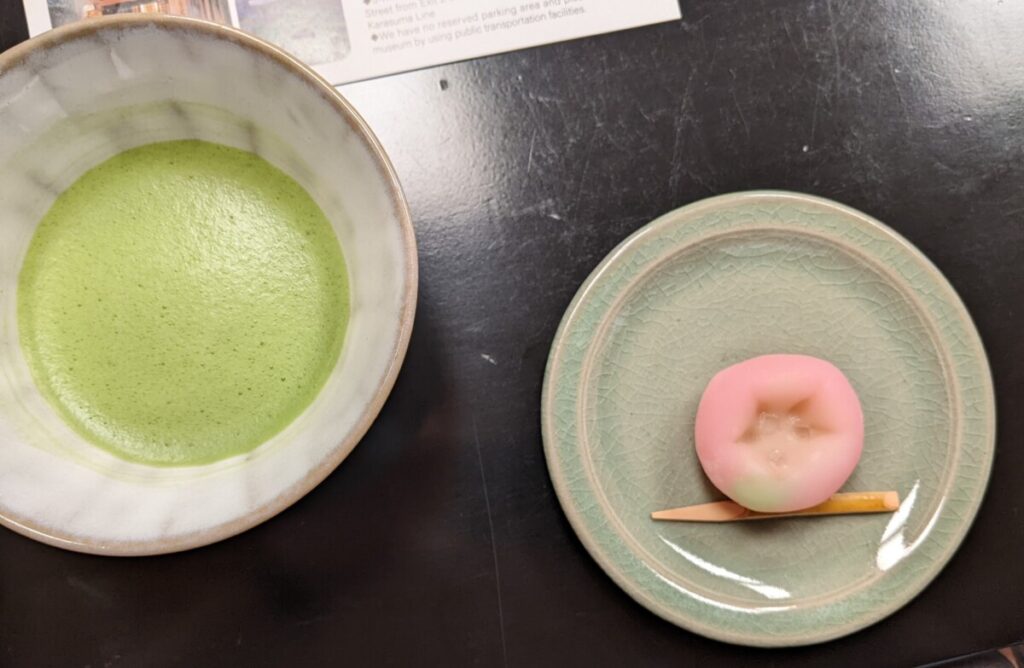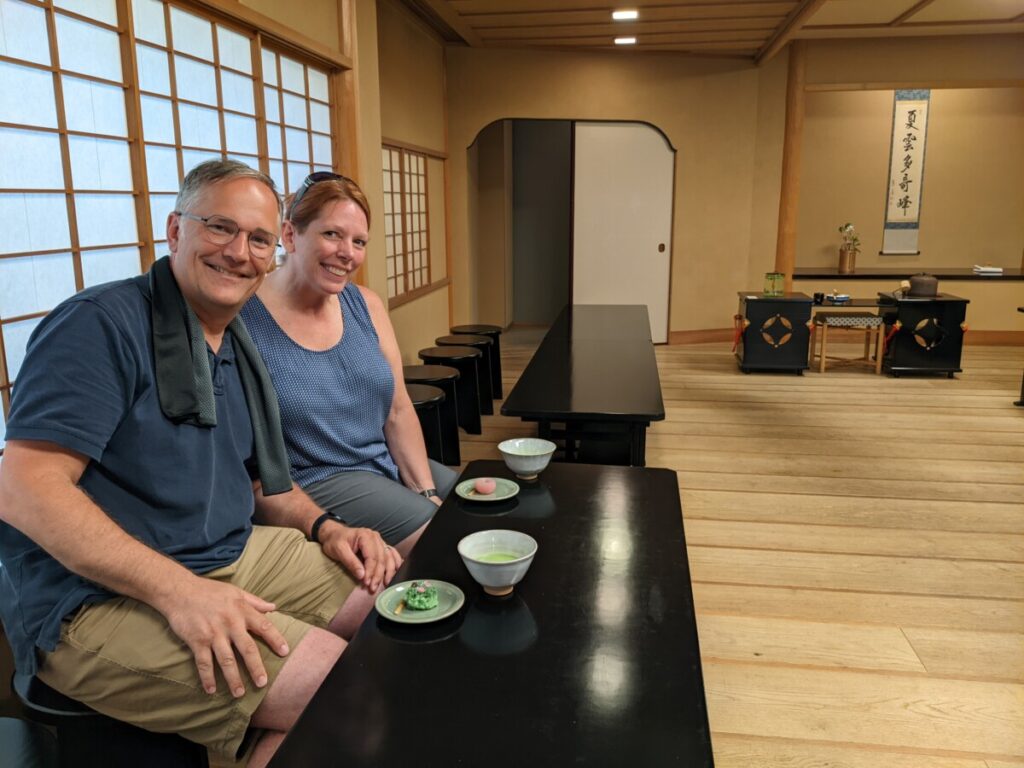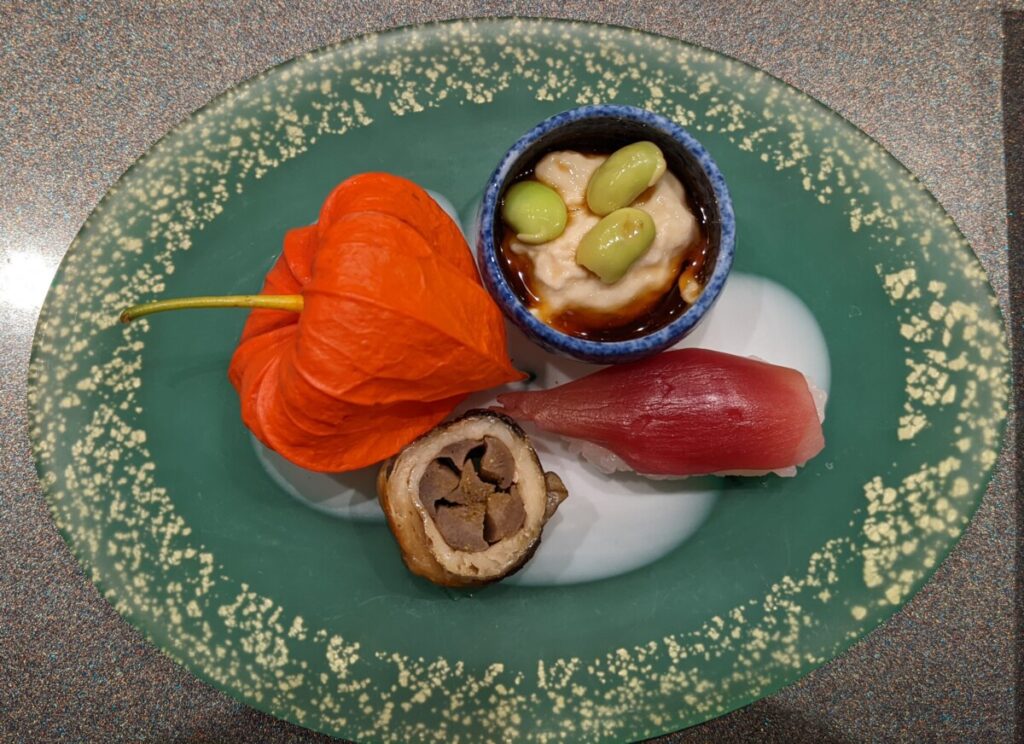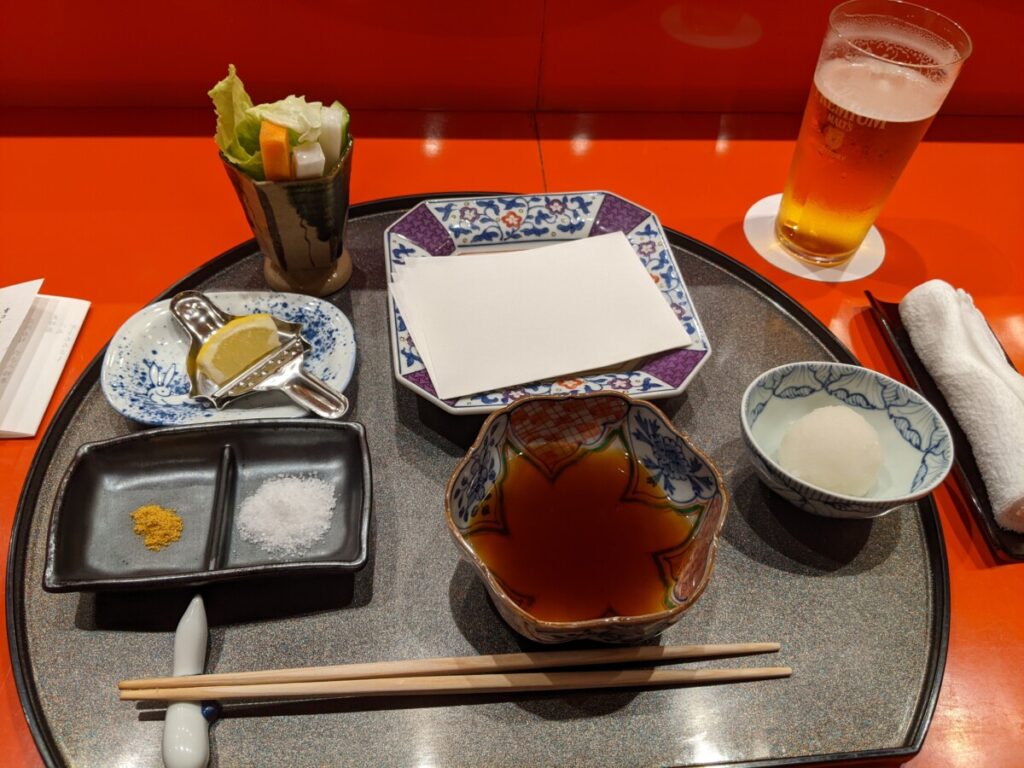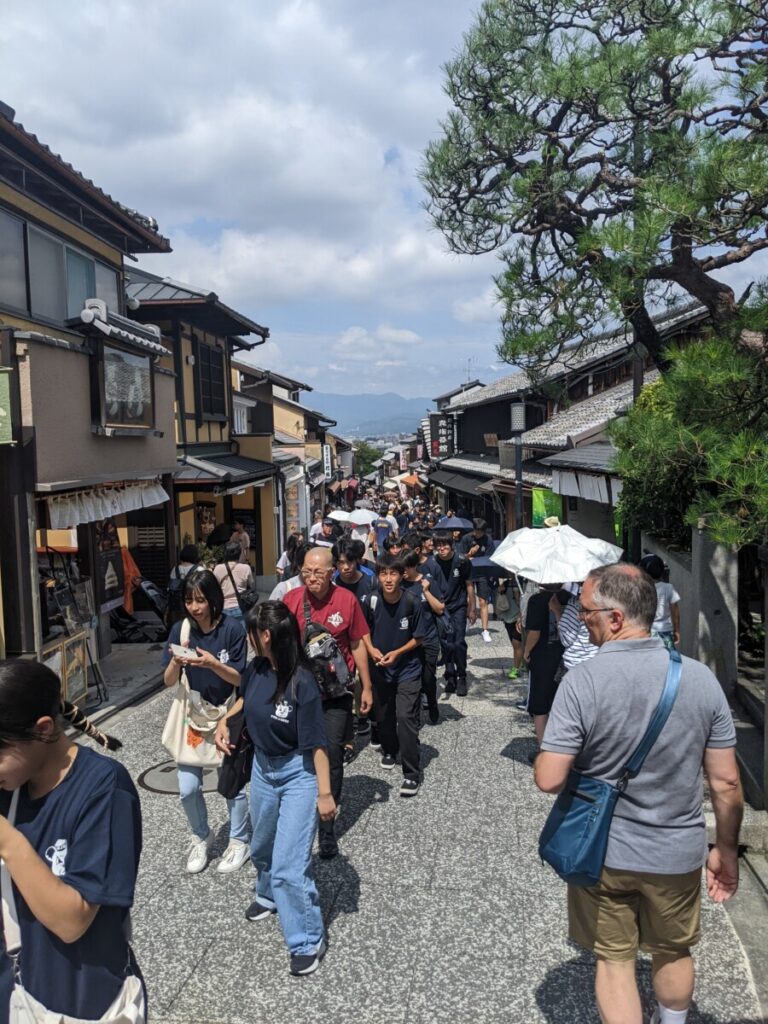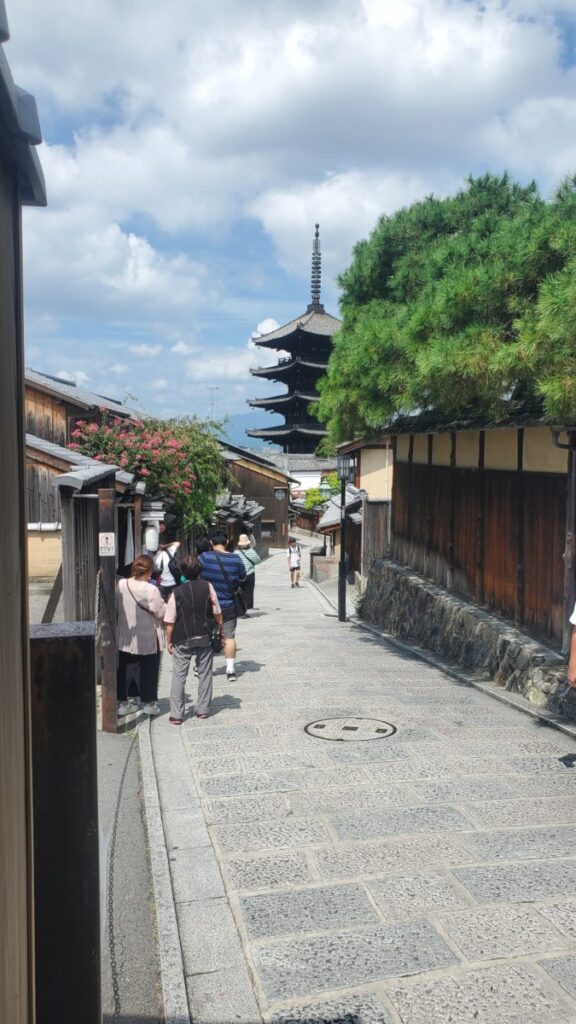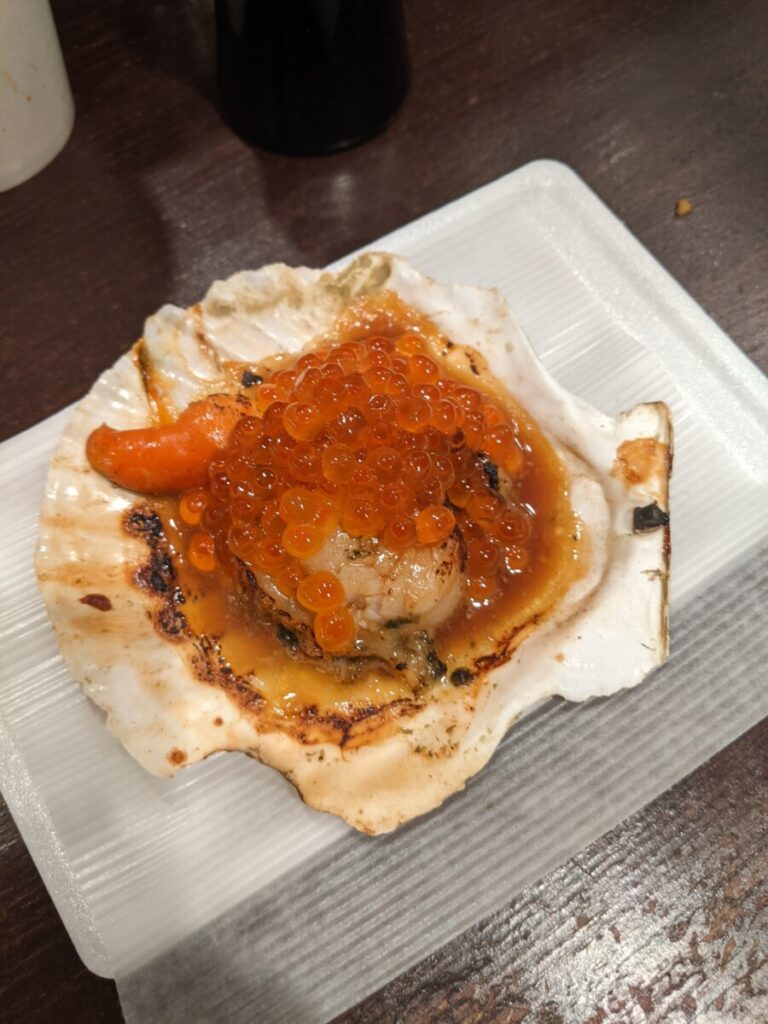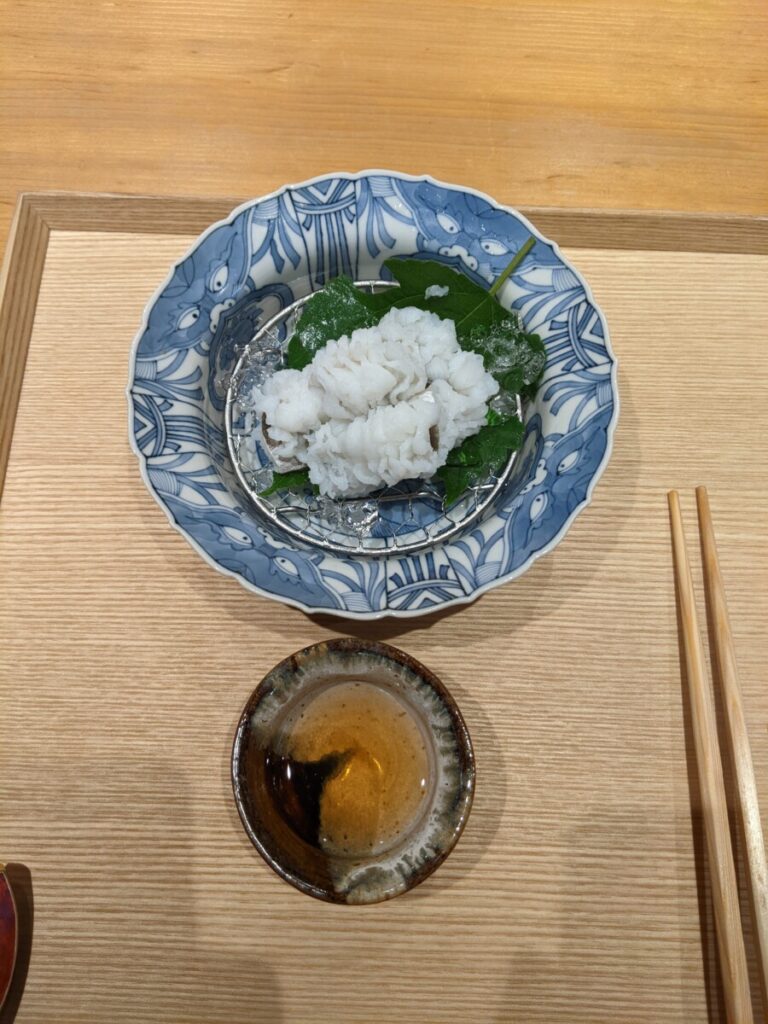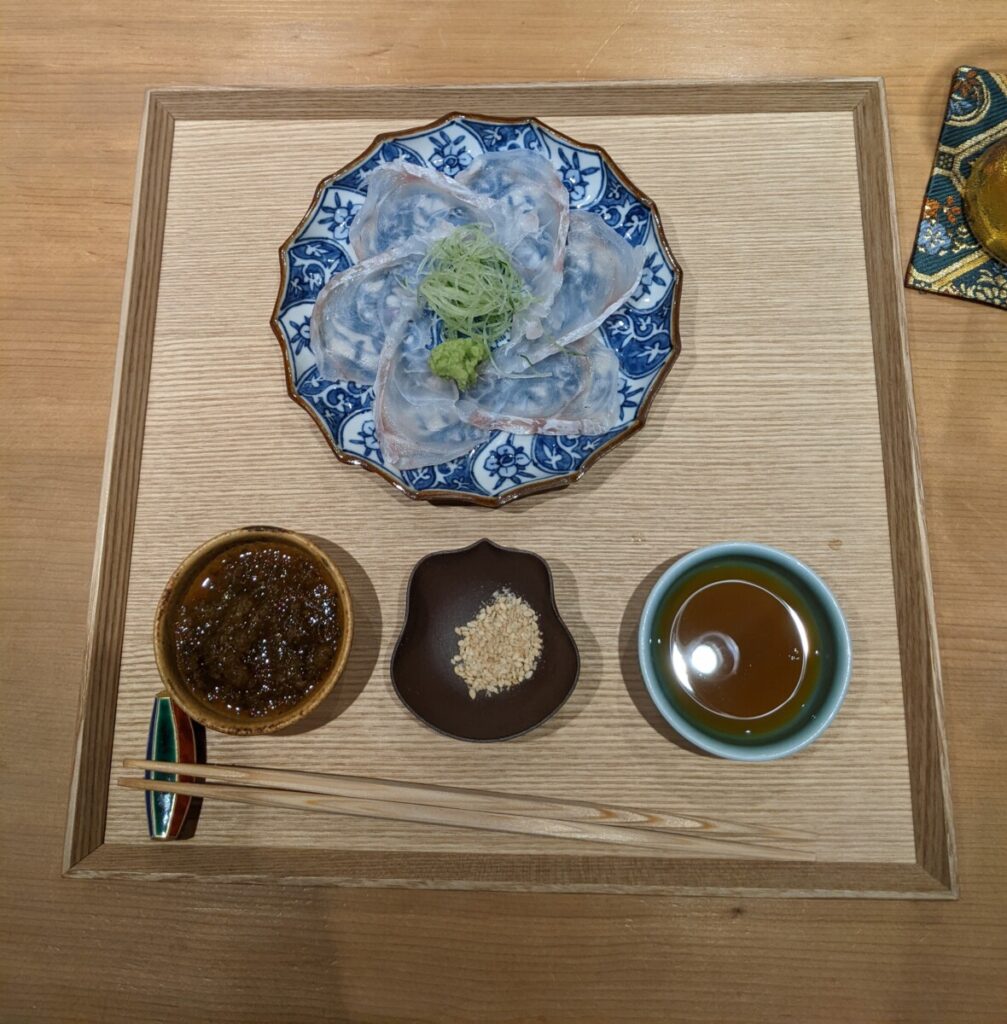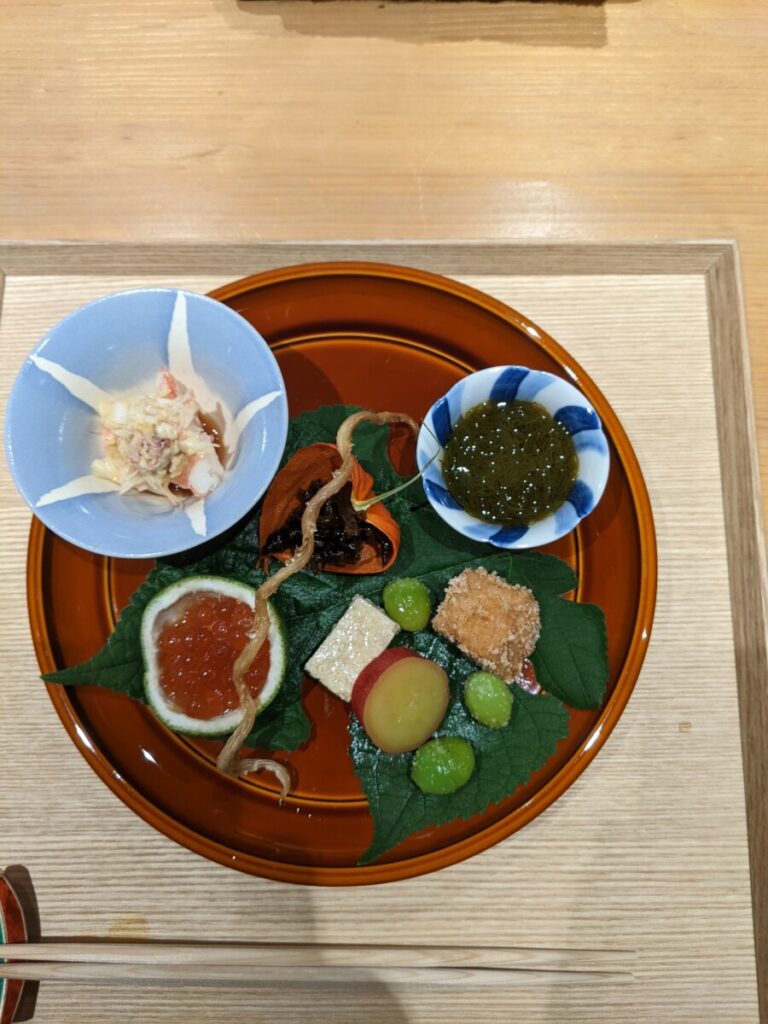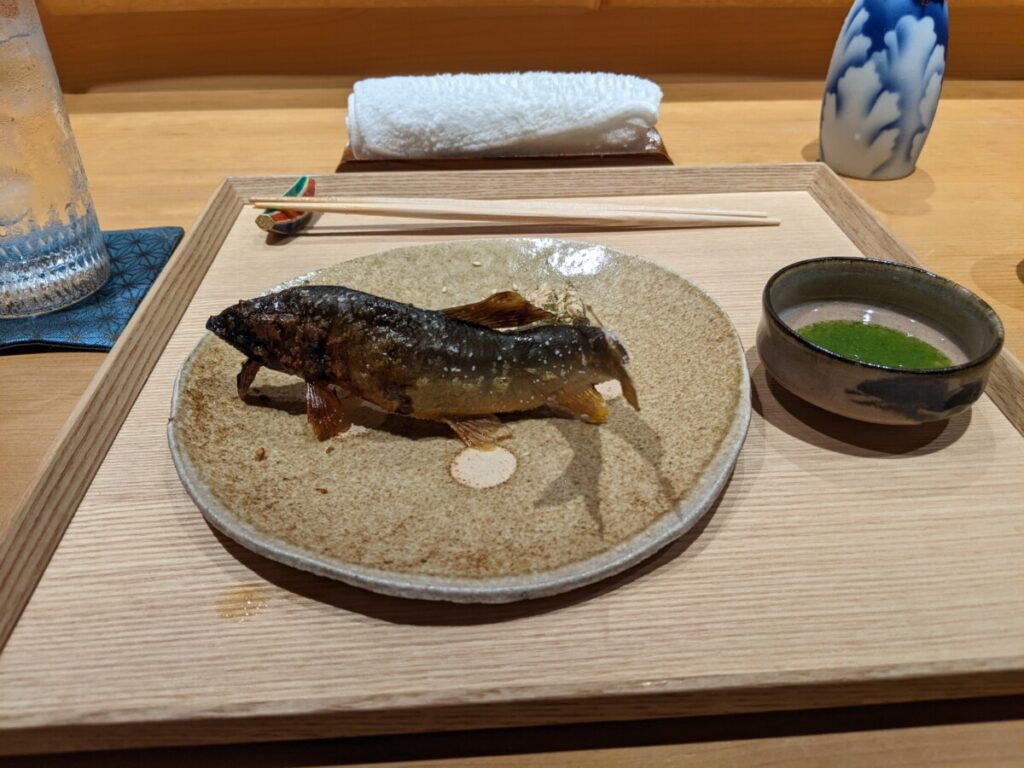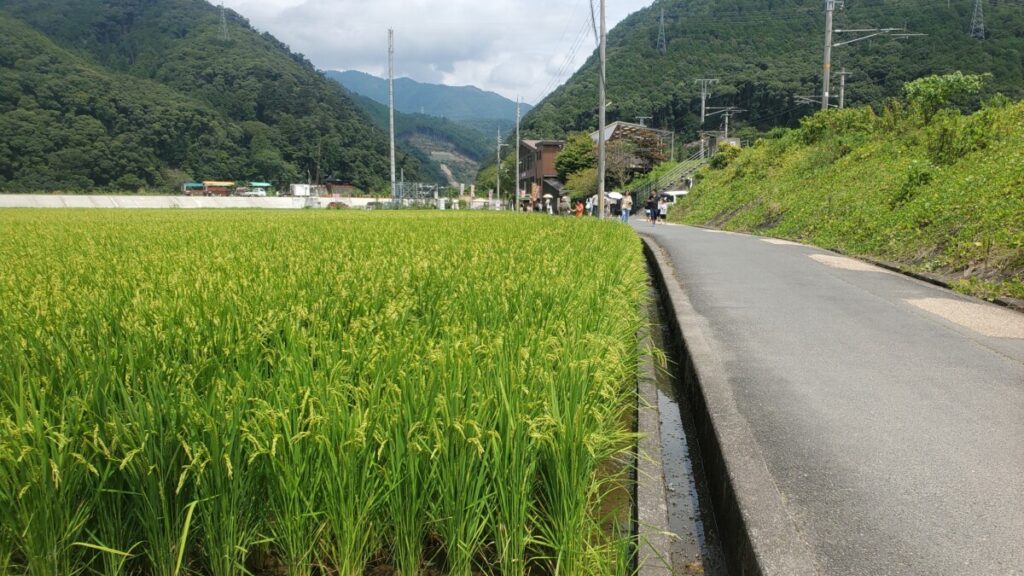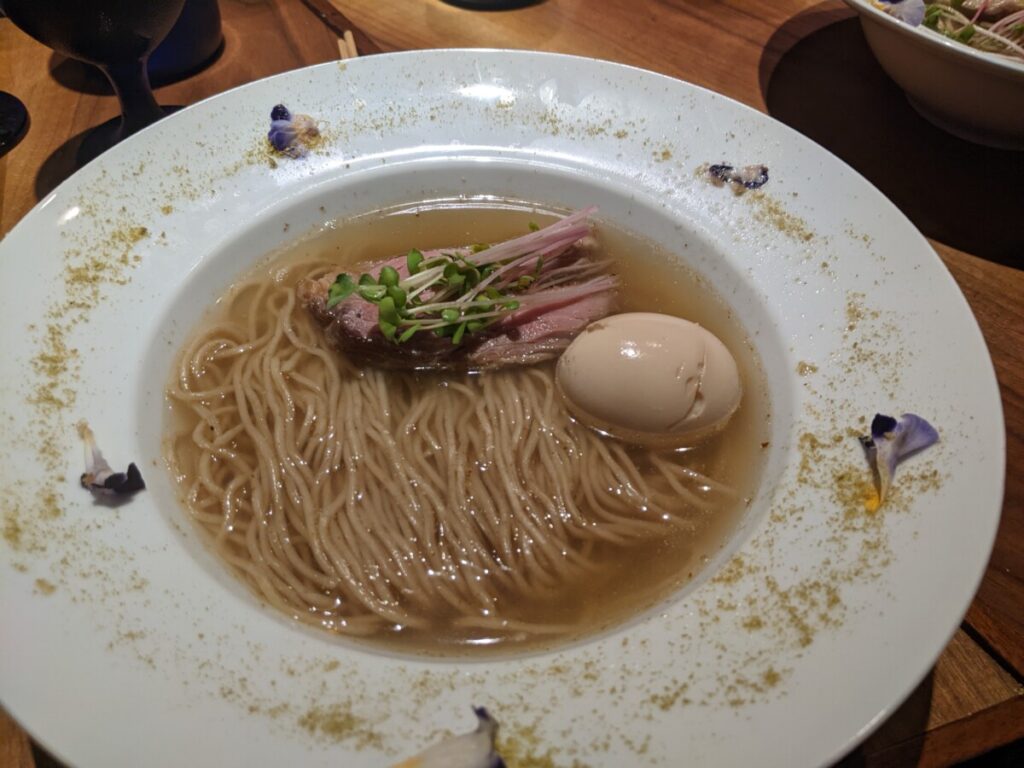On Sunday, Leigh had another full day of conference stuff to attend to, so I was once again left to my own devices. I planned to spend some more time in Ueno Park, particularly at the Tokyo National Museum, but since I had some time before the museum opened, I decided to check out Yanaka Ginza, a street described in the tourist guides as “old-fashioned”.
Unfortunately, not much opens early in Tokyo, but that did mean I was able to get a nice shot of the art on these shutters.

I also caught the very end of some sort of procession featuring senior citizens with flowers on their heads.
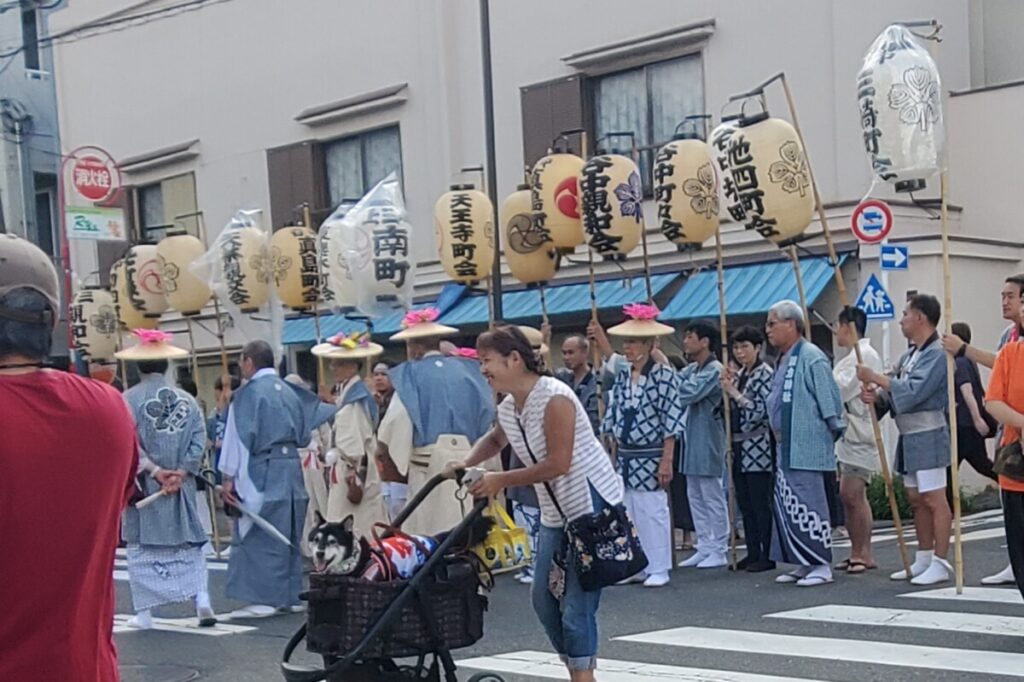
From there, I started making my way towards Ueno. I passed this, and was absolutely baffled.

Why is there a stone sculpture of what appears to be a cartoon character in front of what appears to be a Buddhist temple? After-the-fact research seems to indicate that that is “Baikinman“, the villain from the “Germ Planet” and leader of the Viruses. And the Buddhist temple may also be a kindergarten? I’m really not any less confused.
My route continued through a graveyard, where I was able to (though a fence) photograph the grave of the last shogun, Tokugawa Yoshinobu.

Moving on, I had timed my trip to arrive at the Tokyo National Museum just about as it was opening. The museum grounds are enormous, and consist of quite a few buildings. This “black gate” is one of two remaining Edo period gates in Tokyo.

Plus, “The Black Gate” sounds metal as hell.
Once I entered the grounds, I spent all of my time in the “Japanese Gallery” of the museum. Visiting all of the buildings would take at LEAST two days to give the entire museum its due. Surprisingly, almost everything in the museum can be photographed. Here’s some samples.
This crabs on this bowl are all one piece with the bowl itself.
And as an interactive exhibit on the way out, visitors could make their own Ukiyo-e wood block prints. Ukiyo-e is a distinctive Japanese style of color woodblock printing, where each color is applied to a carved block which is then applied to the final image one at a time. When you think about Japanese visual art, you are very likely thinking of this style of printing.
Here’s a stunning one from the museum.

The way the interactive one works is that you are given a blank piece of paper and there’s a series of stations with frames to hold the paper in place and a large rubber stamp. You stamp each color onto the paper, and voilà!

Remember, this page was BLANK when I started. Pretty nifty souvenir.
At this point, it was lunch time, so I wandered out of the museum and toward the shouting and music I heard from further into the park.
When later describing to Leigh what happened next, I opened with “The nice Australian man said the blue beer was delicious, but I shouldn’t have listened to him.”
There was a beer festival going on, familiar in a lot of ways from any similar festival in North America. Tourists who could show their passport got in free. Dozens of tents selling beer and food on sticks.
The entertainment was wannabe idol groups, mostly set on proving unambiguously that they did not have the aid of Autotune.
And there was blue beer. It was not good, no matter what the nice Australian man said. I honestly don’t know what I was expecting.
The park contains lots of other stuff, like a memorial to that time Ulysses S. Grant planted a tree.
There’s also a shrine dedicated to the FIRST Tokugawa shogun, coming full circle from the gravesite earlier.

At this point, I was ready for a break (the heat had NOT magically abated, and I’d been doing a lot of walking), so I headed back to Ikebukuro to relax in the hotel for a bit before heading down to Takadanobaba to do probably the LEAST relaxing thing I had planned for the whole trip.
Before we get to that, a quick note on Takadanobaba. Every train station in Tokyo plays a little jingle to announce the train doors are closing. At the subway stops, the jingles are all unique, but that’s not necessarily the case for the above-ground rail lines.
However, it’s DEFINITELY the case for the Takadanobaba stop on the Yamanote line, which plays the theme to “Astro Boy.” Apparently Astro Boy was actually based in the neighborhood. There’s a big mural under the train tracks that I didn’t photograph because there were a bunch of protesters in front of it. What were they protesting? No idea, my rudimentary Japanese only sufficed to determine that they were not professing a desire to be taken to the train station. That would have been silly anyway, considering they were directly under it.
But not taking pictures of murals is NOT the stressful thing I had in mind. Rather, as someone with a whopping year and a half of jazz piano lessons under my belt, I somehow thought it would be a good idea to go to a jam session. In Tokyo.
Not to bury the lead, the experience WAS pretty cool. The place was tiny, and the owner bounced back and forth between playing saxophone with the house band and tending bar. If you wanted to play, you put your name down on a list, and after the house band’s set, they started calling people up to play.
I was paired with a local on drums, and three other Americans, two of whom were friends and colleagues of Leigh’s that she had brought with her from the conference.
So… yeah. That happened. We played Corcovado. Leigh’s friends were amazing, and I am informed that I did not humiliate myself TOO badly. And the bass player rapped “The Fresh Prince of Bel Air” instead of taking a solo. That happened too.
The second time I got called up didn’t go as well, but the fact that I was even able to force myself to give it a go at all is something I’m proud of.
Afterwards, the three of us and Leigh went and got ramen.




